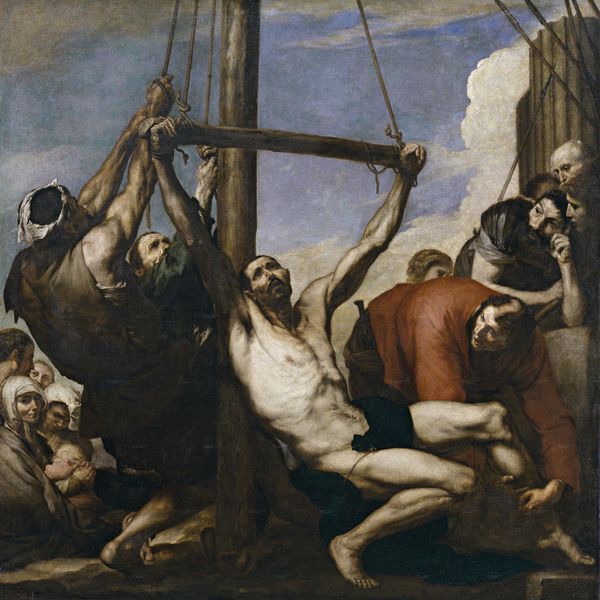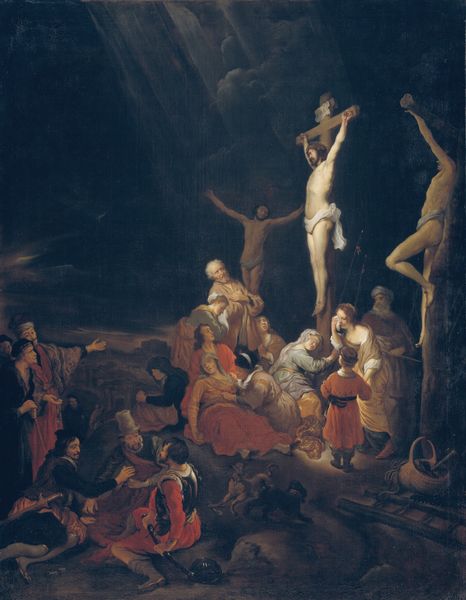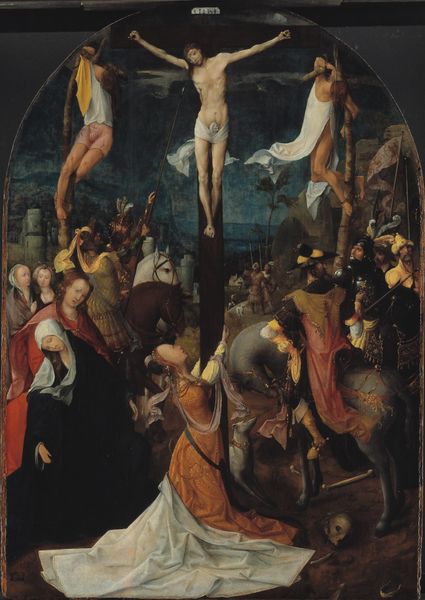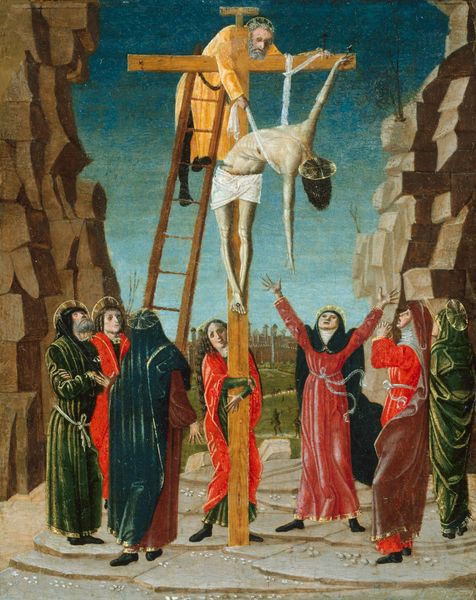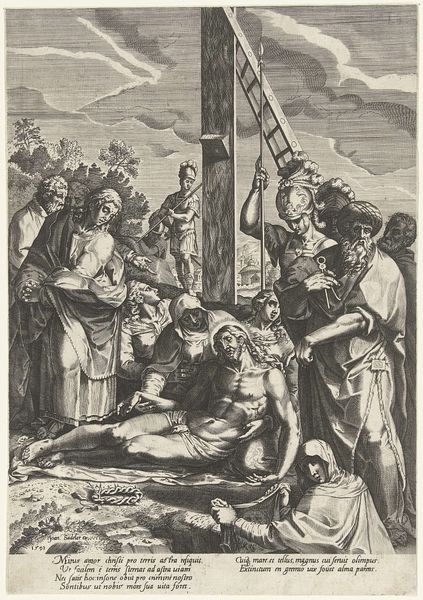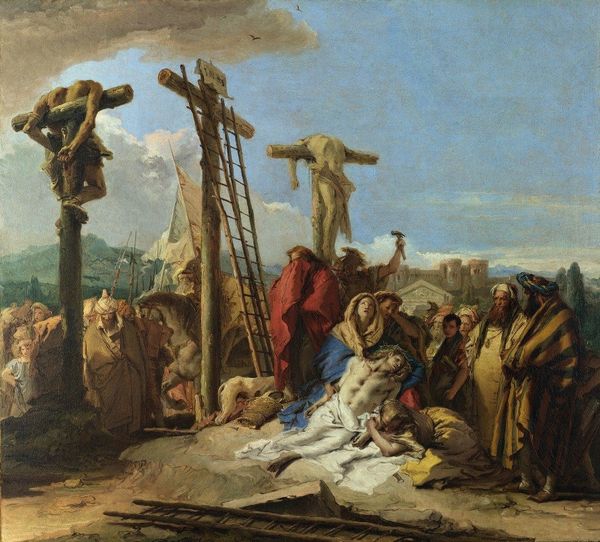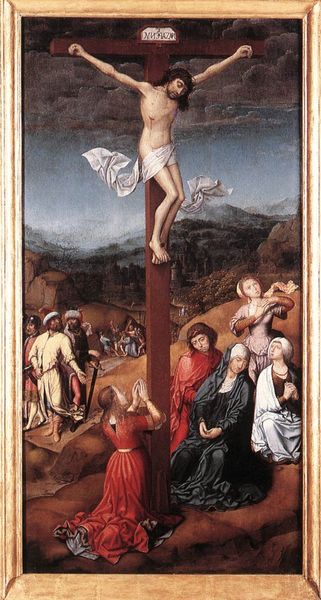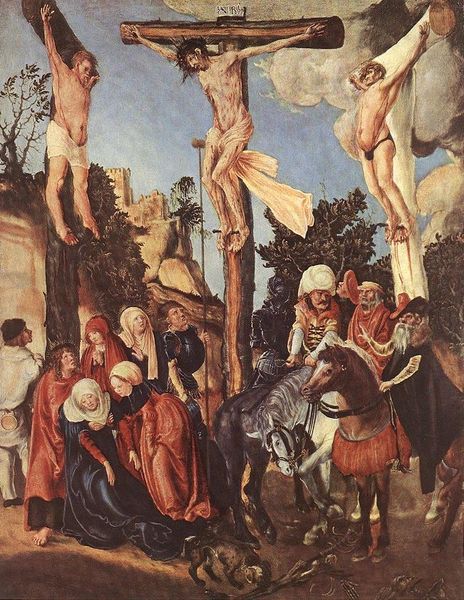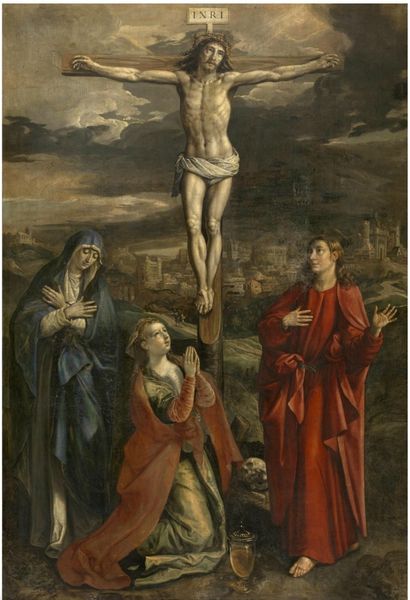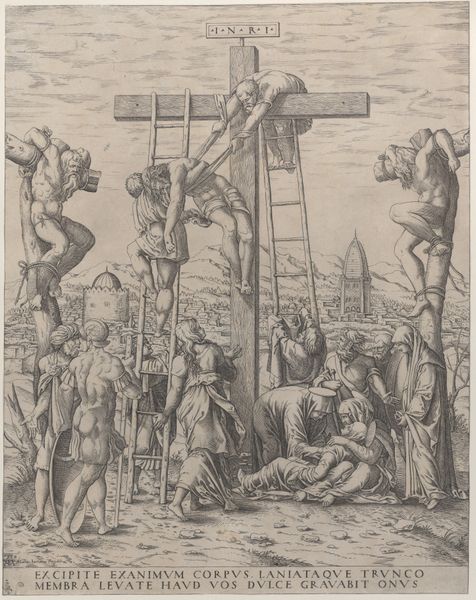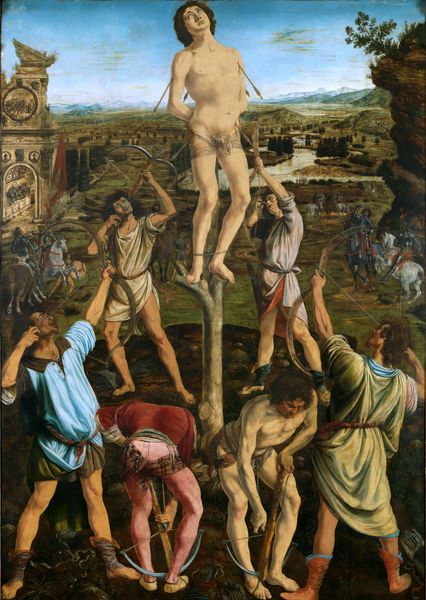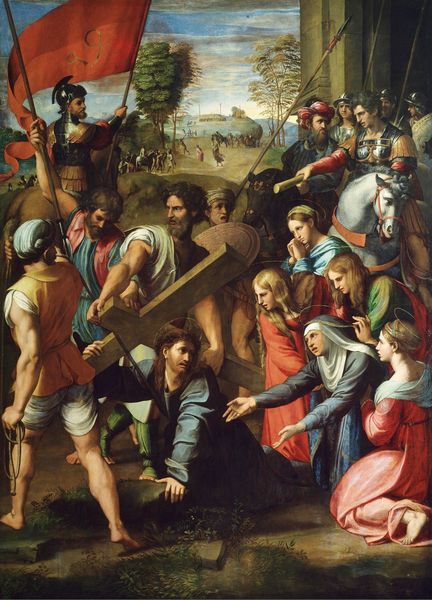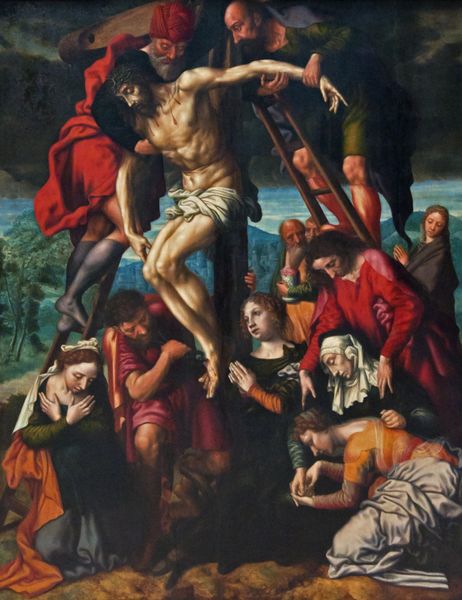
painting, oil-paint
#
baroque
#
painting
#
oil-paint
#
figuration
#
crucifixion
#
history-painting
Dimensions: 48 3/4 × 40 1/2 in. (123.8 × 102.9 cm)
Copyright: Public Domain
Curator: Looking at this artwork by Pedro Orrente, dating from around 1625 to 1630, the initial impression is one of a very active depiction of a somber scene. There's so much happening at once. Editor: Somber indeed! The pallid flesh tones against that churning, dark sky evoke an atmosphere laden with injustice and despair. The entire composition directs the gaze to the horror of this brutal execution. Curator: Absolutely, it is an undeniable representation of The Crucifixion. Note the structure though; the way Orrente utilizes the diagonal lines of the ladders and crosses to create a dynamic composition. How would you analyze the figures below, attending the execution? Editor: Below, the figures, largely women, represent the voiceless. This composition resonates powerfully with contemporary dialogues about state violence and its disproportionate impact on marginalized communities. This is especially true, given Orrente's interest in themes around marginalization in Spain. Curator: It is fascinating how the formal aspects – the dramatic chiaroscuro, for instance – heighten the emotional intensity of the scene. Observe the stark contrast of light and shadow playing across Christ's body. Editor: Exactly, but for whom is this drama intended? Religious painting, at this point, operated as political statement, bolstering or justifying social order. I see, beyond the aesthetic drama, a careful presentation meant to induce empathy within certain segments of society while reinforcing power dynamics. The gaze invites submission rather than, say, rebellion. Curator: Perhaps. Yet, looking at the rendering of the human form itself—the detailed musculature, the dramatic poses—one could argue for a deeper, universal appeal to human empathy. Orrente understood the baroque conventions for eliciting feeling and did not shy from intense emotion. Editor: The composition itself—the arrangement of bodies, the visual hierarchy— functions ideologically, in addition to offering purely emotional experience. Art always implicates structures of power; to disregard this feels irresponsible. Curator: Of course, and these varied readings speak to the enduring power of "The Crucifixion" by Orrente to elicit a diverse and dynamic interpretations even today. Editor: Indeed, recognizing those varied lenses enhances, I think, not only our understanding of art history, but also of ourselves.
Comments
No comments
Be the first to comment and join the conversation on the ultimate creative platform.
